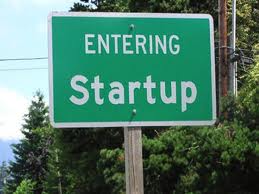 Everything that I learned in college about interviewing is essentially worthless. After speaking to those that are close to me who will soon be graduating, I decided to jot some pointers down.
Everything that I learned in college about interviewing is essentially worthless. After speaking to those that are close to me who will soon be graduating, I decided to jot some pointers down.
Most pertinent to a startup or early-stage environment, the following points stem from hundreds of hours of actual interviewing experience. Tech interviews will be more tech-centric and sales interviews will be more dollar-centric, but all interviews with an entrepreneur will require an entrepreneurial approach.
1. The person interviewing you would rather be doing something else.
Don’t kid yourself. Very few entrepreneurial hiring managers look forward to spending hours of their day interviewing candidates. There is always a critical problem to solve, email to be answered or money to be made buried in their hectic schedule. Interviewing candidates is a need and not a want.
Make the experience as memorable as possible for them and capitalize on their limited attention span. Use the first 15 critical minutes of pitch time to communicate your personal executive summary. Succinctly highlight how you make a difference, how you help the bottom line, how you deal with problems, why you can be player and coach, what motivates you and why you’re there for that opportunity.
2. The person interviewing you will speak to dozens more like you.
You likely have been “chosen” to interview less than you think. With stacks of resumes piling up and a never ending to-do list, the entrepreneurial hiring manager has made a quick, educated guess to speak to you based on the need to solve an immediate problem. Something in your resume, LinkedIn profile or referral has gotten you in front of them.
Make it worthwhile. Be the first appointment on their schedule or the last appointment that day. Give them a reason to remember you throughout the day or during their evening commute. Connect on a personal level and appeal to their emotions. Work days will be stressful, highly charged, energetic and sometimes painful. Give the hiring manager a sense of comfort that when difficult situations and long hours arise, you can be the professional family member that they can count on.
3. The person interviewing you knows the textbook garbage.
Just like you already know how to respond to textbook interview questions, assume that the entrepreneurial hiring manager knows when they are asked by a candidate. Further, if you get the textbook interview questions, run away…run far, far away. It’s a sure sign of things to come but that’s a different topic. Instead, craft questions that are intelligent, pertinent, thought-provoking and challenge the hiring manager.
Likely, you will come up with something that’s already been thought of. The key is to find the sweet spot where the question/thought was previously their own or introduced by someone that they respect. This is impressive and says a lot about your ability with creative problem solving. Understand the business and craft questions related to expanding the business rather than defining it. Repeating facts from a Google search or simply perusing the website is classic, textbook mediocrity.
4. The person interviewing you is not mediocre.
Startups and early stage companies have little time, money, patience and tolerance for layers of mediocrity. You are likely interviewing with someone who is either the direct decision maker or a trusted previous hire. This means that they have either developed their own tests or have already passed the tests so never assume that a half-a**ed approach will fool anyone.
No organization needs mediocrity. Startups and early stage companies especially are not looking for the typical 9-to-5′er looking for defined vacation schedules. Set yourself apart by highlighting flexibility, adaptability, comfort with uncertainty and a general can-do attitude. There’s nothing wrong with living for work in the entrepreneurial hiring manager’s eyes.
5. The person interviewing you is a salesperson.
They have no choice in the matter. Every day they are either selling a product, a service, a solution, an idea or themselves to someone internally or externally. You need to have the same exact mentality in the “everyone sells” model. With limited experience, highlight entrepreneurial endeavors that you started in school.
For pros, highlight bottom-line milestones from previous engagements. Talk facts and figures and make it all relative. Focus on your personal brand and use your reputation as your strongest asset. This reputation can come from your studies, collegiate organizations, co-ops, internships, professional organizations, or employer experiences. No matter what the examples are, show that you identified an opportunity and capitalized on it. Be prepared to sell yourself or don’t bother at all.
There’s more, of course, but these five points should get you started. There’s no substitute for practice, practice, practice so if you are fortunate enough to have a trusted mock-interview resource, use them. The worst interviews in the world are the ones where both parties walk away feeling like the hours were completely wasted. No one has the spare time for that.
This post originally appeared on the author’s blog.
Max Sobol is Partner and President @ IdeaEvolver. He’s passionate about startups: getting them built, staffed, supported, optimized, growing and then some.
The Young Entrepreneur Council (YEC) is an invite-only organization comprised of the world’s most promising young entrepreneurs. In partnership with Citi, the YEC recently launched #StartupLab, a free virtual mentorship program that helps millions of entrepreneurs start and grow businesses via live video chats, an expert content library and email lessons.














